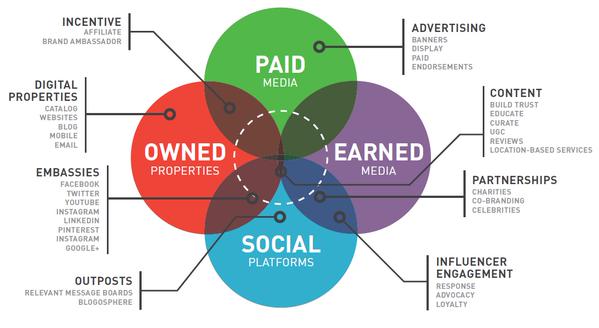Your content marketing can be a healthy mix of paid, owned and earned content. It doesn’t always have to be content that is specifically produced and distributed by your business. But which is better?
If I want to arrange different types of content in terms of significance, I would like to arrange it like this:
- Earned content
- Owned content
- Paid content
Yes, paid content should be the last resort for companies that neither have enough patience and money to invest in owned content nor do they have some known presence to get earned content. First, a quick difference, according to this blog post I wrote a while ago, between paid, owned and earned content…
Earned content
Directly you have no control over this content. It is created mostly by people who know about you, who have used your products and services, or haven’t use them but heard about them, or are planning to use them, or are reluctant to use them, or are simply bitching about them. They may tweet about you, write about you on Facebook or on their blog, participate in the comment or online forum threads, talk to each other about you or write reviews about you. They may also leave comments on your YouTube videos. They may retweet updates from your business. Basically, earned content happens because you have earned it by your presence, by your engagements, by your interactions.
Owned content
Owned content is something that you have written, you have produced (either yourself or you have hired someone) on your own website, on your own blog and under your various social media and social networking channels. All the content that exists on your website, on your mobile site, your in-house magazine, your brochures and the apps you may have developed for your business – they are all a part of owned content.
Paid content
As the name suggests, you pay for this content. It can come in the form of sponsored social media and social networking updates. It can be paid search. You can pay journalists and bloggers to write about you. It can also include TV and print ads. Whenever you pay for it, it is paid content.
What sort of content is good for your content marketing?
It depends on the resources available to you and it also depends on your long-term and short-term plans. Although I don’t prefer paid content but this can also be a good, short-term option for you. While you are creating owned content and you’re investing in earned content, you can put some money on paid content to start getting some presence for you.
Using the combination of all the three content types, this is how I would formulate a content marketing strategy for a small business:
- Make sure you have some owned content on your website. All the main pages including your homepage, services, company profile, products and services descriptions – everything that is needed on a professional website, must be there. There is no sense promoting your website without this much of owned content. If you have also launched a business blog for yourself, make sure it has at least 20 blog posts of more than 400 words each (just a benchmark figure).
- Start investing some money in the paid content. This will give you initial boost. You can get your tweets promoted. You can pay for Facebook ads. You can also spend some money on Google AdWords. This will cut short your time and get you some visibility while you are creating a presence for yourself.
- Start focusing on earned content after you have achieved .1 and .2. This may begin to happen on its own due to your owned and paid content, or you may have to make some effort stepping up conversations and interactions with various people. Increase your network. Start interacting with influential people. If yours is a B2B business, create a presence on LinkedIn.
- Go on creating owned content that fuels earned content. Remember that earned content means people are talking about you and there is a buzz around your product or service. So this is better than owned content and much better than paid content. Eventually it is a mix of earned and owned content that should be the main ingredient of your content marketing strategy.

